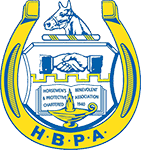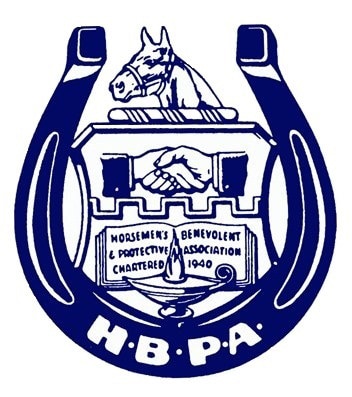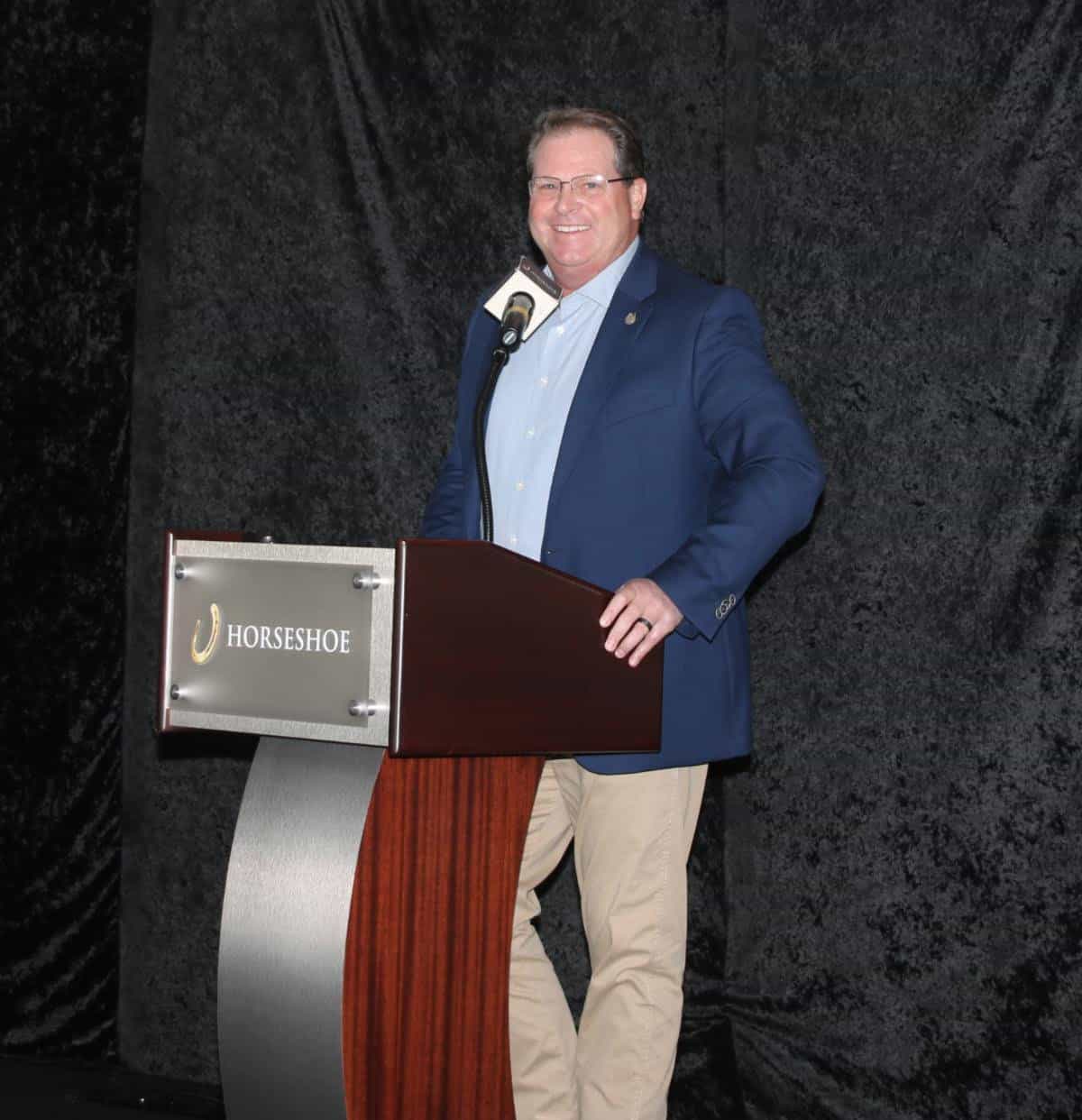National HBPA Convention panel : How to address inadvertent transfer of substances to horses
 National HBPA Convention panel : Racing should follow human drug testing to address inadvertent transfer of substances to horses
National HBPA Convention panel : Racing should follow human drug testing to address inadvertent transfer of substances to horses
Ted Shults, a nationally recognized expert in forensic toxicology and law, says racing chemists and regulators face “self-inflicted injury” if their testing policies fail to recognize the existence of environmental contamination and inadvertent transfer of recreational and prescription medications to horses.
“We would never do this on the human side,” said Shults, who works in both the equine and human testing worlds.
Such environmental transfer to horses was the topic of the Kent Stirling Memorial Scientific Panel at the National Horsemen’s Benevolent and Protective Association Convention that concluded Friday at the Astor Crowne Plaza. The audience heard how increasingly sensitive testing has led to horses testing positive for drugs or therapeutic medications that were not administered to them by their trainer or veterinarian. Among them: cocaine, morphine, methamphetamine, dextromethorphan and the non-steroidal anti-inflammatory Naproxin.
The Horsemen’s Benevolent and Protective Association has lobbied hard for screening and threshold levels that would not call a positive finding for such substances when detected at trace levels that have no impact on horses’ performance.
Shults said he worked for one of the first certified labs that did testing for the U.S. military. “One of the first things I learned was, ‘Look, we have a choice here: Do we want a litigation program? Or do we want a testing program?’” he said. “My view has always been, ‘Get the litigatable issues out of here. Figure out a way of fixing them. Don’t make believe they don’t exist. Don’t try to cover them up.’ Because the word will get out, and next thing you know we’re up to our elbows in cases.”
Dr. Thomas Tobin, the veterinarian and pharmacologist at the University of Kentucky who is a longtime consultant to the National HBPA on medication and drug testing, showed findings from a 2016 study where swabs of the walls in 18 ship-in stalls at Hollywood Casino at Charles Town Races detected 30 different medications and drugs. The 50 total instances of contamination broke down to 20 findings of equine medications, 16 of recreational drugs and 14 of human prescription medications, he said.
Shults said that with today’s testing technology “the race for sensitivity is over…. We’re on the verge of going toward (detection levels) of parts per trillion.
“My concern is now — and what we recognize on the human side — OK, we’re down in the picogram level, but what are we measuring? What are we looking at?” he said. “… Now we’re dealing with environmental contamination, and it’s not just on the surface. We have it in the air. People smoke marijuana, they smoke crack, methamphetamine. And then we have water, and we have food.
“… I first heard about this maybe 15 years ago when people were finding benzoylecgonine (a metabolite of cocaine) in the Po River that runs through Rome. I said, ‘You’ve got to be kidding me.’ Well they found it on the West Coast in the Snake River.…. I think there’s a growing awareness of environmental contamination out there, because it’s well established that most of the paper (currency) in circulation has benzoylecgonine. But there’s more and more paper that has — guess what? – methamphetamine. Now I don’t think the horses are eating the dollar bills out of the grooms’ pocket. But it’s become part of the environment, of the universe we live in. You have a drug user, maybe it’s a legal drug, maybe illegal. If they’re going to take whiz in the stall on the hay, guess who is going to eat the hay?… One of my favorite little ones, esoteric kind of thing, this is a guy that’s got a (positive) test for minoxidil — Rogaine. It was the guy’s hair spray.”
Dr. Levent Dirikolu, who oversees Louisiana horse racing’s test at the Louisiana State University lab, said more than 300 tons of cocaine is imported into the United States each year, contaminating “approximately 75 to 95 percent of U.S. dollar bills.”
He said if only the metabolite benzoylecgonine is detected that it could be a sign that the urine sample was contaminated while or after it had been collected from the horse. “If the cocaine passes through the horse, you should be able to detect other metabolites of cocaine,” he said.
Kirikolu said nine states publish a screening level for benzoylecgonine, with Louisiana’s cutoff in horse urine at 150 nanograms per milliliter, which is similar to human testing.
“What if I’m in a state that doesn’t have a published screening limit? Does that mean I’m at major risk for an environmental contamination at a low level?” Dave Basler, the executive director of the Ohio HBPA who heads the National HBPA’s medication committee, asked the audience. “The answer is maybe. The reason is, there are many labs, maybe even the majority, that may not have a published screening limit for benzoylecgonine, for methamphetamine, for a lot of the other medications or drugs we’ve talked about. But they have an internal screening limit. I’m not sure that one is preferable to the other, as long as there is a limit in place that is high enough that we don’t have environmental transfer or environmental contamination issue. The problem being, you just don’t know if it’s not published.”
Dr. Clara Fenger, a Kentucky veterinarian and researcher, brought up Illinois harness-racing cases where horses were testing positive for the pain medication Tramadol — all having raced out of the same paddock stall.
“The paddock judge was urinating in the stall, and the paddock judge was on Tramadol,” she said. “…. We need to start considering an environmental contamination violation category, so we can separate contaminants from real attempts to cheat.”
Hugh Gallagher, the New York Racing Association’s safety steward, represented the perspective of racing officials.
He said mitigating factors must be considered in such cases. But he also said that trainers must do more to keep their barn environmentally contaminant-free, including stressing to employees that “stalls are not bathrooms.” He also cautioned about keeping coffee, tea, energy drinks and chocolate away from horses. Likewise, regulators must do a better job sanitizing those areas where horses have blood and urine samples taken, he said, also advocating drug testing employees who handle horses at some stage of a race.
Dr. Scott Stanley, who heads California’s testing lab, said a distinction should be made between environmental contamination — such as a feed or supplement contamination put into a horse unbeknownst to a trainer — and human drugs of abuse that result in exposure to horses.
He said labs and commissions must be open to doing detective work to ferret out what might cause a positive finding, not just assuming the trainer is to blame but that more also can be done to reduce the transfer of substances to horses. One suggestion: having horse identifiers and the starting-gate crew wear latex gloves, and more pre-employment drug screening be implemented.
MaryAnn O’Connell, executive director of the Washington HBPA, said some officials view contamination “as the new loophole for trainers” and are unwilling to consider the science or to test state employees who handle horses. “They say, ‘Well it could have been contamination, but it could have not been,’” she said. “So they’re going to side with the not been. The burden of proof is so high on the trainers.”
“It should not be taken as a loophole,” Gallagher said, saying he would refer the matter for Racing Officials Accreditation Program’s stewards advisory committee. “… We have to work together and find solutions together. Racing regulators and horsemen have to work for a common goal. And it has to be done the right way and done fairly and justly.”
Gallagher opened his remarks with quotes from the Greek philosopher Heraclitus and the renowned California steward Pete Pedersen as ageless advice for stewards.
Heraclitus: “Unless you expect the unexpected, you will not find it; for it is hidden and thickly tangled.”
Pedersen on medication of the horse: “Encourage research. Study the matter and have an open mind… There are limitations to the expert. Concentrate, as an official, on what you do not know, not only what you do know.”
Also Friday
The convention’s final day of programming kicked off with a panel discussion entitled Sexual Harassment in Horse Racing: More Me Too and is Time About Up. Richard Riedel, long-time executive director of the Kentucky Racing Health & Welfare Fund, said his research showed that in 1994, Hispanic females on the backside accounted for only one of every 26 workers. Last year there were 2.6 males or non-Hispanic women for every Hispanic female on the backstretch, with Riedel saying they soon will be the largest demographic, while also the most vulnerable population for abuse.
“You’ve got to design programs to address the workforce,” Riedel said.
Representatives of the Thoroughbred Owners and Breeders Association explained the benefits of being a TOBA member as well as the TOBA Owners Concierge program that is charged with providing owners exceptional customer service, timely information and access to local resources to ensure a positive experience at the racetrack.





